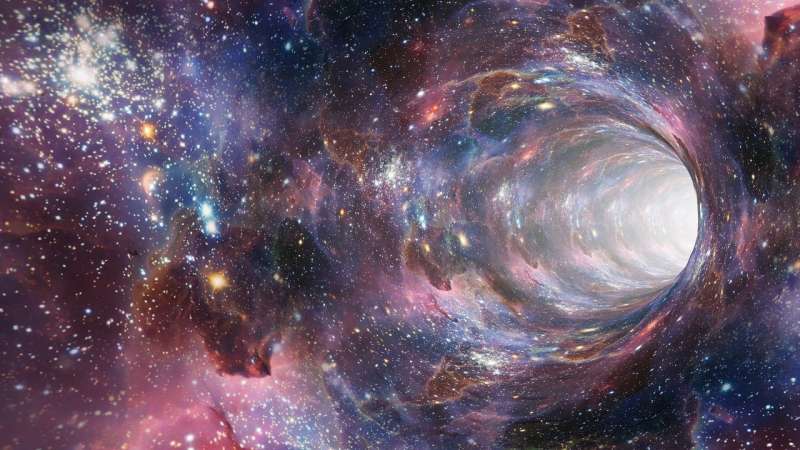Hunting dark energy with gravity resonance spectroscopy

Dark Energy is widely believed to be the driving force behind the universe's accelerating expansion, and several theories have now been proposed to explain its elusive nature. However, these theories predict that its influence on quantum scales must be vanishingly small, and experiments so far have not been accurate enough to either verify or discredit them. In new research published in EPJ ST, a team led by Hartmut Abele at TU Wien in Austria demonstrates a robust experimental technique for studying one such theory, using ultra-cold neutrons. Named "Gravity Resonance Spectroscopy" (GRS), their approach could bring researchers a step closer to understanding one of the greatest mysteries in cosmology.
Previously, phenomena named "scalar symmetron fields" have been proposed as a potential candidate for Dark Energy. If they exist, these fields will be far weaker than gravity—currently the weakest fundamental force known to physics. Therefore, by searching for extremely subtle anomalies in the behaviors of quantum particles trapped in gravitational fields, researchers could prove the existence of these fields experimentally. Within a gravitational field, ultra-cold neutrons can assume several discrete quantum states, which vary depending on the strength of the field. Through GRS, these neutrons are made to transition to higher-energy quantum states by the finely tuned mechanical oscillations of a near-perfect mirror. Any shifts from the expected values for the energy differences between these states could then indicate the influence of Dark Energy.
In their study, Abele's team designed and demonstrated a GRS experiment named "qBOUNCE," which they based around a technique named Ramsey spectroscopy. This involved causing neutrons in an ultra-cold beam to transition to higher-energy quantum states—before scattering away any unwanted states, and picking up the remaining neutrons in a detector. Through precise measurements of the energy differences between particular states, the researchers could place far more stringent bounds on the parameters of scalar symmetron fields. Their technique now paves the way for even more precise searches for Dark Energy in future research.
More information: Tobias Jenke et al, Gravity resonance spectroscopy and dark energy symmetron fields, The European Physical Journal Special Topics (2021). DOI: 10.1140/epjs/s11734-021-00088-y
Provided by Springer


















